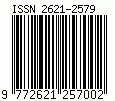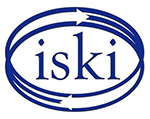Indonesian Newsroom Management on Uyghur News Coverage
DOI:
https://doi.org/10.12928/channel.v10i2.127Keywords:
uyghur, newsroom management, foreign issue, republika, tempoAbstract
The case of the Uyghur ethnic in Xinjiang, China, has drawn global attention, and so has the media coverage of this issue. In Indonesia, the Uyghur issue attracts people’s attention due to religious sentiment. This article aims to determine how Indonesian mass media newsroom management is in Uyghur news coverage. Much previous research discusses how Indonesian media news coverage towards the Uyghur issue, but most use content analysis methods. Meanwhile, the primary data of this article is an interview with the journalist. Two media, Tempo and Republika, have been chosen as the subject matter, as both have different ideologies: human rights (Tempo) and Islam (Republika). The results show that both media use psychological proximity as a consideration in choosing information and news angles for the Uyghur issue. In organizing, both media do not form specific teams or order journalists based on particular skills to cover it. In the fundamental phase, both media admit difficulties in news coverage due to the limited access in Xinjiang directly, so for the news that happens in China. They can only use foreign news agencies, then rewrite the information to contextual the issue for Indonesian readers. For issues related to Uyghur in Indonesia, both media gather the information by direct reporting and interviewing Indonesian government officials or Islamic organizations. For the controlling phase, Republika did formal and informal procedures. Meanwhile, Tempo uses feedback from readers mentioned on social media and a board called Ombudsman.
References
Boumans, J., Trilling, D., Vilegenthart, R., & Boomgaarden, H. (2018). The agency makes the (Online) news world go round: The impact of news agency content on print and online news. International Journal of Communication, 12, 1768–1789. https://ijoc.org/index.php/ijoc/article/view/7109
Dewi, N. R., Irsyad, M., Mufarikhin, M., & Feriansyah, A. M. (2020). Dinamika kemanusiaan muslim Uyghur di Cina. IJTIMAIYA: Journal of Social Science Teaching, 4(1), 62. https://doi.org/10.21043/ji.v4i1.7452
Fathurokhmah, F. (2018). Ideologi radikalisme dalam islam tentang wacana homoseksual di media massa. INJECT (Interdisciplinary Journal of Communication), 3(2), 193. https://doi.org/10.18326/inject.v3i2.193-212
Guo, L., & Vargo, C. J. (2017). Global intermedia agenda setting: A big data analysis of international news flow. Journal of Communication, 67(4), 499–520. https://doi.org/10.1111/jcom.12311
Ji, F. Y. (2014). Talking past each other: Chinese and Western discourses on ethnic conflict. Procedia - Social and Behavioral Sciences, 155, 434–441. https://doi.org/10.1016/j.sbspro.2014.10.318
Katon, F.; Yuniati, U.; Hardi, NM. 2022. "Social Reality Construction of Corona Virus Handling News in Natuna on Republika Online and CNNIndonesia.com". Channel Jurnal Komunikasi Vol 10, No.1. DOI: http://dx.doi.org/10.12928/channel.v10i1.22636
Keller, A. (2009). Tantangan dari dalam otonomi redaksi media cetak nasional : Kompas, koran tempo, media Indonesia, republika. In Friedrich Ebert Stiftung (FES) Indonesia Office.
Kominfo. (n.d). Uyghur search result. retrieved from https://www.kominfo.go.id/search?search=uyghur&page=1
Kurniawan, A. A., Maulidya, A. D., Sa’ban, K., & Indrawati, I. (2020). The Chinese vs Western media framing on Uyghur conflict. Journal of Islamic World and Politics, 4(2). https://doi.org/10.18196/jiwp.4249
Kurysheva, Y. V., Potolokova, M. O., BorisovichNikonov, S., Samsonova, A. A., & Kovalenko, B. N. (2021). International news agency in shaping the national daily agenda. Journal of Contemporary Issues in Business and Government, 27(1). https://cibgp.com/article_10223.html
Masyarakat Anti Fitnah Indonesia. (2018). Pemetaan disinfomrasi/misninformasi mafindo tahun 2018. https://www.mafindo.or.id/wp-content/uploads/2020/06/Media-Release_Mapping Hoaks-2018.pdf
Marta, R. F. Kurniawati, L. S. M. W. Harry, H., Salim, M. Andung, P. A. (2022). Transfer of Knowledge and Scientific Publication Literacy for Young Lecturer by Pojok Dialektika. Abdimas Galuh 4 (1), 310-322. http://dx.doi.org/10.25157/ag.v4i1.7128
Millward, J. (2004). Policy Studies 6: Violent Separatism in Xinjiang: A Critical Assessment. Washington: East-West Center Washington
Melati, V. (2020). Framing media massa tentang konflik muslim Uighur di Cina perbandingan Web NU Online dan Eramuslim [Universitas Negeri Jakarta]. http://repository.unj.ac.id/8774/
Mudjiyanto, B., & Dunan, A. (2020). Media mainstream jadi rujukan media sosial. E-Journal Penelitian Dan Pengembangan Komunikasi Dan Informatika, 1(1). https://jurnal.kominfo.go.id/index.php/mkm/article/view/3244
Paterson, C. (2007). International news on the internet : Why more is less. The International Journal of Communication Ethics, 4(1). https://eprints.whiterose.ac.uk/96730/
Pradityo, R. (2020). Indonesia di antara masalah etnis Rohingya dan etnis Uighur 2014-2019. Indonesian Perspective, 5(2), 138–158. https://doi.org/10.14710/ip.v5i2.33958
Purba, R. C. (2020). Upaya Tiongkok dalam mempertahankan Provinsi Xinjiang di Tengah tekanan internasional. Journal of International Relations, 6(4), 578–588. https://ejournal3.undip.ac.id/index.php/jihi/article/view/28684/24436
Rachmawati, F.; Kriyantono, R.; Antoni. 2019. "Analisis Framing Kegiatan Keislaman Joko Widodo melalui Portal Berita Setkab.go.id dalam Menjawab Isu Jokowi Anti Islam Periode Oktober 2014-Juli 2018". Channel Jurnal Komunikasi, Vol.7, No.1. DOI: http://dx.doi.org/10.12928/channel.v7i1.13014
Rahmayuni, D., & Hidayat, H. (2020). Hierarki pengaruh isu-isu moderasi beragama pada media Guo Ji Ri Bao studi kasus berita konflik etnis Uighur di Xinjiang. Jurnal Studi Jurnalistik, 2(1).
Rasyid, A., & Siagian, H. F. (2017). News value and reality : A case study. Malaysian Journal of Communication, 33(3), 55–69. https://myjurnal.mohe.gov.my/public/article-view.php?id=116627
Reese, S. D. (2010). Journalism and globalization. Sociology Compass, 4(6), 344–353. https://doi.org/10.1111/j.1751-9020.2010.00282.x
Rianto, P. (2016). Media baru, visi khalayak aktif dan urgensi literasi media. Jurnal Komunikasi, 1(2), 90–96. http://www.jurnal-iski.or.id/index.php/jkiski/article/view/54/28
Rianto, P. (2020). Modul penelitian kualitatif. In Komunikasi UII.
Rivai, A. N. A. (2021). Joko Widodo, Islam, dan kebijakan luar negeri Indonesia : Tinjauan berdasarkan pendekatan konstruktif. Review of International Relations (Jurnal Kajian Ilmu Hubungan Internasional), 3(2). https://doi.org/https://doi.org/10.24252/rir.v3i2.26818
Safwedha, O., & Suprihatini, T. (2019). Konstruksi realitas media massa tempo dan republika dalam pemberitaan Basuki Tjahja Purnama pasca pilkada putaran pertama DKI Jakarta 2017. Interaksi Online, 7(4), 90–96.
Sakurai, T. (2017). Cultural factors in the flow of international news: A review of the literature. SHS Web of Conferences, 33, 00008. https://doi.org/10.1051/shsconf/20173300008
Salim, M., Utami, F. U., Bramantyo, H. (2021). Digital Media-Based Nutrition Health Communication Model. 3rd Jogjakarta Communication Conference (JCC 2021). 247-251. https://www.atlantis-press.com/proceedings/jcc-21/125964693
Sari, W. Y., & Rusadi, U. (2019). Wacana pemberitaan diskriminasi terhadap muslim Uyghur di Republika.co.id dan Kompas.com. Jurnal ISIP: Jurnal Ilmu Sosial Dan Ilmu Politik, 16(2), 75. https://doi.org/10.36451/j.isip.v16i2.27
Shafiullah, M., & Ali, S. (2018). Dependency of mainstream Pakistani English newspapers on foreign news agencies: A comparative study of daily dawn and the news international. Global Mass Communication Review, III(I), 1–17. https://doi.org/10.31703/gmcr.2018(III-I).01
Trianton, T. (2016). Jurnalistik komprehensif. In Ombak. Ombak.
Wanting, S., & Karnanta, K. Y. (2019). Perbandingan representasi etnis Uighur di media berita China Daily dan BBC. Lakon : Jurnal Kajian Sastra Dan Budaya, 8(1), 28. https://doi.org/10.20473/lakon.v8i1.9330
Wardah, A. W. (2020). Analisis framing pemberitaan muslim Uighur dalam portal online Kompas.com dan Detik.com [UIN Sunan Ampel Surabaya]. In Digital Library: UIN Sunan Ampel Surabaya. http://digilib.uinsby.ac.id/42984/
Yunus, S. (2012). Jurnalistik terapan. Ghalia Indonesia.
Zamroni, M., Astuti, Y. D., & Zuhri, A. (2021). Religious radicalism frame in the online media news (Framing analysis reporting of “ISIS” in republika.co.id and temp.co). Jurnal Ilmiah Islam Futura, 21(1), 80. https://doi.org/10.22373/jiif.v0i0.5837
Downloads
Published
How to Cite
Issue
Section
License
Copyright (c) 2022 CHANNEL: Jurnal Komunikasi

This work is licensed under a Creative Commons Attribution-ShareAlike 4.0 International License.






